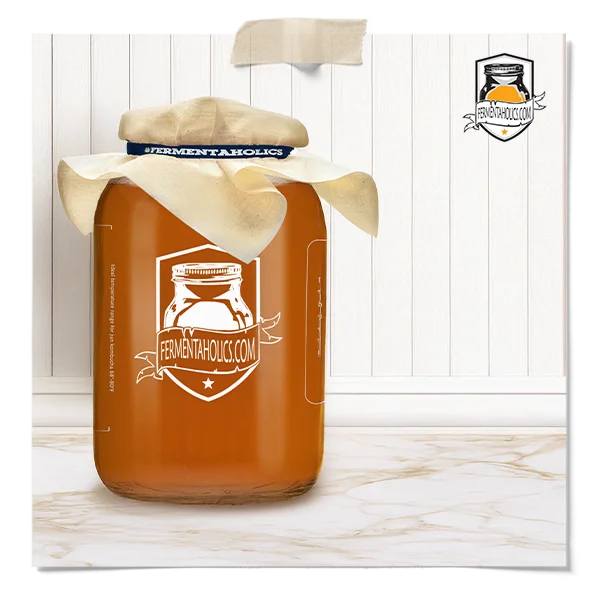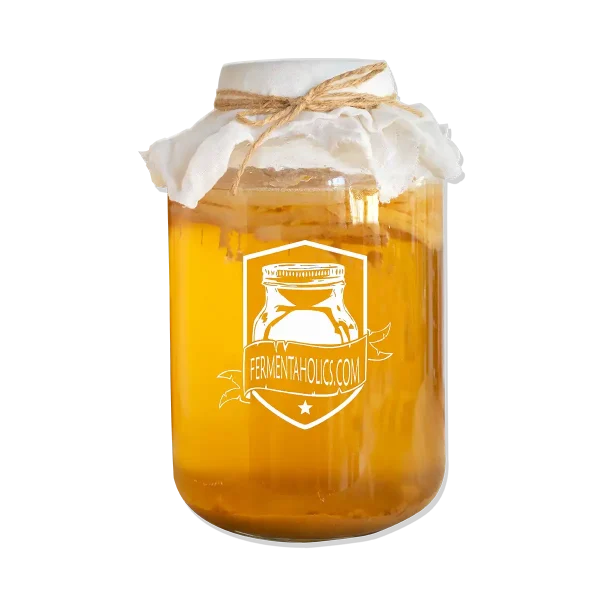
Short Answer: No, if you aren’t seeing bubbles in your kombucha brew, it’s not dead. This is mostly expected and almost always a non-issue. Visible bubbles may or may not appear during fermentation, and their absence doesn’t mean your kombucha isn’t fermenting. Let’s break it down.
Not seeing bubbles in your kombucha during primary fermentation is very common. This often raises concerns, especially for new brewers or anyone who’s made beer or wine before. Those types of ferments typically use a single yeast strain and are visibly active—bubbling, foaming, or moving around for days. Kombucha doesn’t act like that at all.
If you were to put a kombucha jar next to a beer ferment, the beer would look alive with activity, while the kombucha would appear completely still. That stillness often makes people think something’s gone wrong, but it hasn’t.
Kombucha fermentation happens at the microbial level, and most of it isn’t visible. Each batch behaves a little differently. You might see a few bubbles forming under a new SCOBY in one batch, and none at all in another—even when using the same kombucha starter culture. Sometimes you’ll notice small air pockets trapped under the surface, which is CO₂, but that’s not consistent either.

What’s important to understand is that primary kombucha fermentation is done in open air. That means any CO₂ being produced is allowed to escape freely through the breathable cloth cover. So even if fermentation is happening, the gas doesn’t build up—it just dissipates. Because of that, the brew looks still, and the surface may appear calm the entire time. That doesn’t mean it’s not fermenting. It just means CO₂ being created isn’t in high enough volume for us to see with the naked eye—it’s still there, just not collecting in a way you can easily see.
Also, while on the subject, this is why kombucha will never be carbonated after primary fermentation. Again, the CO₂ freely escapes since there’s no sealed environment to trap the gas, so there’s no fizz being stored.
Visual cues like bubbles, cloudiness, or SCOBY formation can be helpful, but they aren’t consistent between batches. One batch might look active while another looks still, yet both are fermenting perfectly well.
Fermentation is a microbial process. Microbes don’t care what your jar looks like. There’s a complex world of activity happening inside your kombucha that you simply can’t see. Relying only on appearances often leads to unnecessary guesswork.
The most reliable way to track kombucha fermentation is by measuring pH. pH testing gives you measurable, scientific data about what’s happening in your brew—no guessing required.
Before fermentation begins, take a baseline pH reading. You’ll need pH test strips or a digital pH meter.
Now that we have the starting pH, we can use this to test progress at a later date. Let your batch ferment for several days to a week, then take another pH reading. Compare this number to your initial value.
For example:
If your pH is dropping, your kombucha is fermenting.
As kombucha ferments, yeast convert sugars into alcohol, and the bacteria convert the alcohol to the beneficial acids. These acids lower the pH over time, creating the tangy flavor kombucha is known for.
The lower the pH, the more acids are present in the liquid. A finished batch usually lands around pH 2.5–3.5.
If you’re worried about your kombucha because you don’t see bubbles, stop guessing and start measuring. Visual signs are inconsistent, but pH tells the real story. Pick up pH strips or a digital meter, track your readings, and you’ll know exactly what’s happening inside your jar.
$14.99 Original price was: $14.99.$13.89Current price is: $13.89.
In stock
$17.99 Original price was: $17.99.$16.99Current price is: $16.99.
In stock
$49.99 Original price was: $49.99.$41.95Current price is: $41.95.
In stock
$18.99 Original price was: $18.99.$17.99Current price is: $17.99.
In stock
$9.99
In stock
